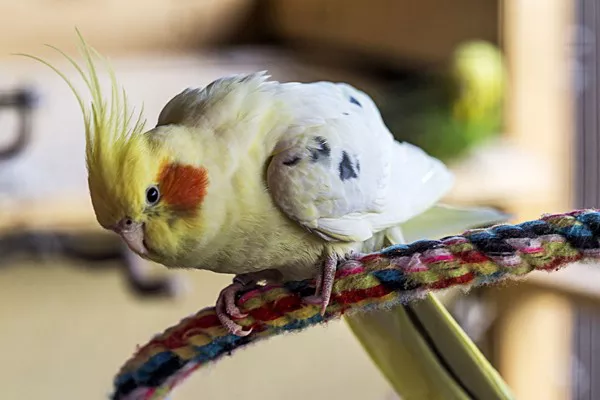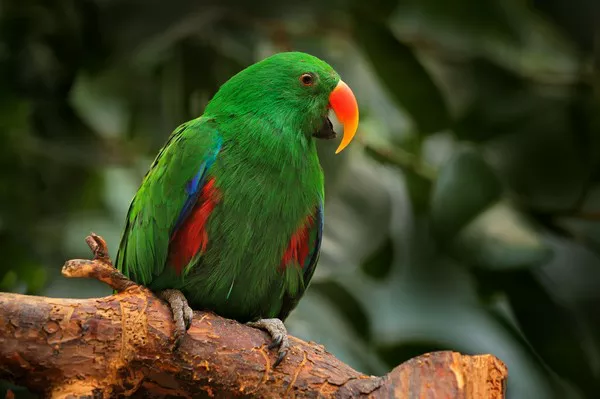Corn snakes are one of the most popular pet snakes, known for their calm demeanor, striking coloration, and relatively easy care. As a pet owner, understanding the lifespan of your corn snake and how to ensure they live a long and healthy life is crucial. This article will explore the lifespan of corn snakes, factors affecting their longevity, and how to properly care for them to maximize their years of companionship.
What Are Corn Snakes?
Corn snakes (Pantherophis guttatus) are a species of non-venomous constrictor snakes native to North America. They are found primarily in the southeastern United States, including areas like Florida, Georgia, and Alabama. Corn snakes are named after the pattern on their skin, which resembles the colors and markings of Indian corn, but they are also referred to as “Red Ratsnakes” due to their relation to the rat snake family.
Corn snakes are medium-sized snakes, typically reaching lengths of 4 to 5 feet (1.2 to 1.5 meters) as adults, although some can grow even longer. Their bodies are slender and elegant, with smooth, shiny scales. Corn snakes come in a variety of colors, ranging from the wild-type orange and red hues to more exotic color morphs, such as albino, lavender, and snow, thanks to selective breeding by pet enthusiasts.
Average Lifespan of Corn Snakes
The average lifespan of a corn snake in the wild is around 6 to 8 years. However, when kept as pets, corn snakes often live much longer, with many living 15 to 20 years or even longer. This extended lifespan in captivity is largely due to the controlled environment and the care that pet owners provide.
Wild corn snakes face many challenges that can reduce their lifespan. They are at risk of predation from larger animals, disease, and food scarcity. They must also deal with environmental hazards like extreme weather conditions. On the other hand, corn snakes kept in captivity are generally protected from these dangers and receive regular care, which helps them live significantly longer.
It is not uncommon for well-cared-for corn snakes to reach their mid-to-late teens, and some exceptional cases have seen snakes live into their early 20s. The oldest recorded corn snake lived to be 23 years old.
Factors That Influence the Lifespan of Corn Snakes
While the average lifespan of a corn snake is typically between 15 and 20 years, several factors can influence how long they live. By understanding these factors, pet owners can take proactive steps to improve the chances of their snake living a long, healthy life.
1. Diet and Nutrition
A balanced diet is essential for any pet, and corn snakes are no exception. In the wild, corn snakes primarily hunt small mammals like mice and birds. In captivity, they are usually fed appropriately-sized rodents, such as mice or rats, that are thawed if frozen. Feeding them a variety of prey items, such as different sizes of mice or even chicks (occasionally), can help ensure that they get a balanced range of nutrients.
Poor nutrition can lead to a variety of health issues, including obesity, malnutrition, or organ failure, all of which can shorten the snake’s life. It is crucial not to overfeed your corn snake, as they are prone to obesity when fed too much, which can affect their lifespan.
2. Environmental Conditions
Corn snakes thrive in warm, humid environments. In the wild, they typically inhabit forests, grasslands, and abandoned buildings where they can find ample hiding spots and the right temperature. As pets, it is important to mimic these conditions as closely as possible. An enclosure that is too cold or too hot can cause stress and harm the snake’s health.
Corn snakes need a temperature gradient in their tank, with one side warmer (around 80°F to 85°F or 27°C to 29°C) and the other cooler (around 70°F to 75°F or 21°C to 24°C). A basking spot with temperatures between 85°F to 90°F (29°C to 32°C) will allow the snake to regulate its body temperature effectively. Humidity levels should be kept around 50% to 60%, with slight increases during shedding cycles.
If the enclosure is too dry or too wet, it can lead to respiratory problems, skin issues, or even death. Maintaining proper environmental conditions in the tank will keep your corn snake healthy and extend its lifespan.
3. Health and Medical Care
Regular veterinary checkups are important for all pets, and corn snakes are no exception. They are prone to certain health issues, such as respiratory infections, mites, and internal parasites. If you notice any unusual symptoms, such as labored breathing, abnormal shedding, or lack of appetite, it’s important to consult with a veterinarian experienced with reptiles.
Corn snakes may also suffer from metabolic bone disease (MBD), a condition caused by a lack of calcium in their diet or insufficient UV light exposure. MBD can cause deformities in their bones and muscles, leading to a shortened lifespan if left untreated.
Maintaining a healthy snake means not only providing a nutritious diet and a proper living environment but also regularly monitoring your pet’s behavior for signs of illness.
4. Genetics
Genetics play a significant role in the lifespan and overall health of your corn snake. Selective breeding practices in captivity have led to the development of various color morphs, some of which may have genetic predispositions to certain health issues. While these color morphs are typically healthy, some of the rarer morphs may have a higher risk of congenital conditions that could impact their longevity.
When purchasing a corn snake, it’s important to get one from a reputable breeder who prioritizes the health and genetic quality of their snakes. Snakes from responsible breeders are more likely to have a longer, healthier life.
5. Exercise and Enrichment
Corn snakes, like other reptiles, need exercise and mental stimulation to stay healthy. In the wild, they are active hunters and explorers, constantly on the move. In captivity, providing enough space for the snake to explore and climb is essential. A snake that is confined to a small, barren enclosure will likely become stressed and inactive, which can lead to health problems.
Providing hiding spots, branches, and objects to climb on will help keep your snake active and mentally stimulated. This activity not only helps maintain a healthy weight but also reduces stress, which can prolong its life.
6. Stress and Handling
Corn snakes are known for their calm and docile nature, making them great pets for beginners. However, they can still experience stress from factors such as improper handling, loud noises, or other pets in the household. Stress can weaken the snake’s immune system and lead to illness or even death in extreme cases.
It’s important to handle your corn snake gently and avoid overhandling, especially during the first few months of its life. Always ensure that your snake has a safe, quiet space where it can retreat if it feels stressed.
How to Ensure a Long Life for Your Corn Snake
If you want your corn snake to live a long, healthy life, there are several things you can do to provide the best possible care:
Provide Proper Housing: A large, secure enclosure with the appropriate temperature gradient and humidity levels is essential. Ensure that your snake has places to hide, climb, and explore.
Offer a Balanced Diet: Feed your corn snake an appropriate diet of mice or rats. Ensure that the prey is the right size and not overfed. Offer food every 5 to 7 days, depending on the snake’s age and size.
Regular Vet Check-ups: Schedule annual or bi-annual checkups with a veterinarian who specializes in reptiles to ensure that your snake is healthy.
Create a Stress-Free Environment: Limit handling to once or twice a week, and provide a quiet, stress-free environment. Avoid loud noises or disruptions around the snake’s enclosure.
Watch for Signs of Illness: Keep an eye out for signs of illness, including changes in behavior, difficulty shedding, loss of appetite, or abnormal movements. Early detection can often prevent more serious health problems.
Provide Enrichment: Offer a variety of climbing structures, hides, and other items to stimulate your snake mentally and physically.
Maintain Hygiene: Clean the enclosure regularly to prevent the buildup of waste, bacteria, and parasites that could harm your snake.
Conclusion
Corn snakes are hardy, long-lived pets when provided with the right care. While the average lifespan in the wild is about 6 to 8 years, corn snakes in captivity often live 15 to 20 years or longer, especially when their dietary, environmental, and healthcare needs are met. By providing your corn snake with a suitable home, a balanced diet, and regular veterinary care, you can help ensure that it has a long, healthy, and happy life.
With proper care, your corn snake can become a cherished companion for many years, delighting you with its beautiful colors and gentle nature. Always remember that as a pet owner, you play a critical role in ensuring your snake’s wellbeing and longevity.
Related Topics:























